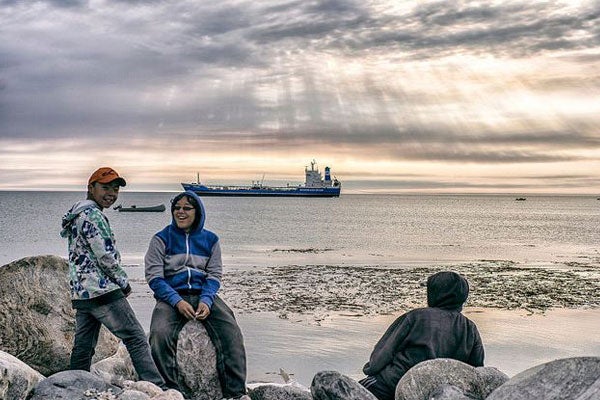
Made in Nunavut: An Experiment in Decentralized Government
Published: February 12, 2016
When the University of Toronto's Graham White first visited the Canadian North in 1988, he knew he’d found a place close to his heart.
“I got off the plane and discovered the most interesting political place I’d ever been,” said White, a U of T Mississauga emeritus professor of political science. “The scenery and people were fascinating, too, politics aside. It’s a fabulous part of the world.”
He continued to do research in the North and watched closely as the Inuit settled their longstanding land claim with the federal government in 1992. A year later, Parliament passed the Nunavut Act to create Canada’s newest territory, and White was able to observe the run-up to its formal beginning in 1999.
Now White, along with co-author Jack Hicks, who served as research director for the Nunavut Implementation Commission, has written a new book about that period, Made in Nunavut: An Experiment in Decentralized Government (UBC Press, December, 2015).
“The notion of watching from the cheap seats as people designed and built a government – it doesn’t get any better than that for someone like me,” said White, an expert in the structures and processes of government.
Together, they have attempted, in a style that White calls “honest – sometimes fairly brutally honest – and straightforward,” to document the birth of a territorial government. By combining academic research with personal experience, they have written a book White hopes will be used in Nunavut’s high schools and Nunavut Arctic College to give the people of Nunavut an understanding of how their government came to be, as well as what has worked and what has not.
The book places special emphasis on “one of the distinguishing features of Nunavut’s government”: decentralization of department headquarters outside the capital city of Iqaluit to very small communities. Decentralization offered an opportunity to spread around well-paying jobs to many communities and to bring government closer to the people, White noted.
The model has provided benefits, he said, but it has not performed as well as planned, something White and Hicks discuss in the latter part of their book.
“The fact that the government is getting cheques out and schools built is significant in itself,” White said, “but on some really big social problems such as suicide, family violence and substance abuse, they haven’t come to grips with making improvements.”
The Inuit form about 85 per cent of Nunavut’s population, and there is also a formal requirement to have representative levels of Inuit hiring at all levels of government, but White said the specialized credentials required for a number of the jobs make it challenging to fill those positions with Inuit.
“The school system is not too good and the dropout rate is quite high,” White said. “Today, a little more than 50 per cent of government employees are Inuit. Almost all of the bottom job categories are filled by Inuit, but they hold only about 20 to 25 per cent of middle and senior management jobs. It’s not easy to boost those figures.
“They are now past the point of being new and have made very little progress on some of these issues,” White said. “However, it is a government that has only been around for 16 years and it has been faced with some really unusual problems. The government of Ontario isn’t perfect and we’ve had almost 150 years to get it right.
“Perhaps the book will add a little fuel to the fire and get people moving.”
(Visit flickr to see the original of the photo by Paul Aningat/Canadian Son used above)



